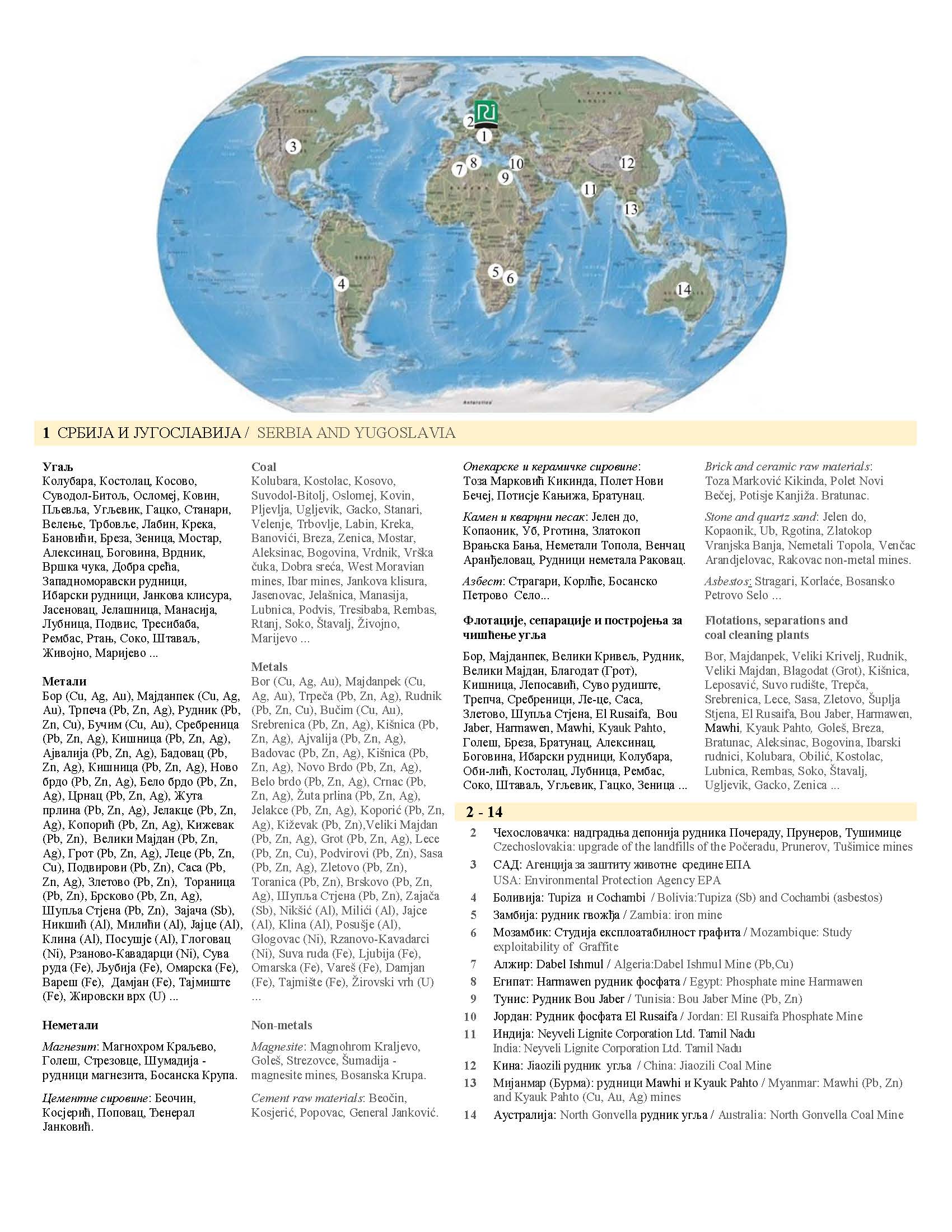For necessities of Yugoslavian, Serbian and mines around the planet (Czechoslovakia, USA, Bolivia, Zambia, Mozambique, Algeria, Egypt, Tunisia, Jordan, India, China, Myanmar, Australia) the Mining Institute has conducted more than 10.000 studies, investment programs, projects, more millions laboratory and field measurements, experimental tests, and had contributed to production improvement, technological modernization, efficiency improvement, ecological and production safety.
According to the project solutions of the Institute, in the country and abroad, over 70 mines were opened with a complete infrastructure, over 40 facilities for the preparation of mineral ores and purification of coal, more than 20 tailing ponds and flying and bottom ash depots, and great results were achieved in the mines and mining basins throughout Serbia and Yugoslavia: Coal: Kolubara, Kostolac, Kosovo, Suvodol-Bitola, Oslomej, Kovin, Pljevlja, Ugljevik, Gacko, Stanari, Velenje, Trbovlje, Labin, Kreka, Banovici, Breza, Zenica, Mostar, Aleksinac, Bogovina, Vrdnik, Vrska Cuka, Dobra happiness, West Moravian mines, Ibar mines, Jankova gorge, Jasenovac, Jelasnica, Manasija, Lubnica, Podvis, Tresibaba, Rembas, Rtanj, Soko, Stavalj, Zivojno, Marijevo, etc. Metals: Bor, Majdanpek, Trpeča, Rudnik, Bučim, Srebrenica, Kišnica, Ajvalija, Badovac, Kišnica, Novo brdo, Belo brdo, Crnac, Žuta prlina, Jelakce, Koporić, Kiževak, Veliki Majda, Grot, Lece, Podvirovi, Sasa, Zletovo, Toranica, Brskovo, Šuplja Stjena, Zajača, Nikšić, Milići, Jajce, Klina, Posušje, Glogovac, Rzanovo-Kavadarci, Suva ruda, Ljubija, Omarska, Vareš, Damjan, Tajmište, Žirovski vrh, etc. Non-metals: Magnohrom Kraljevo, Goles, Strezovce, Sumadija – magnesite mines, Bosanska Krupa, Beocin, Kosjeric, Popovac, General Jankovic, Toza Markovic Kikinda, Polet Novi Becej, Potisje Kanjiza, Bratunac, Jelen do, Kopaonik, Ub, Rkopina, Banja, Nemetali Topola, Venčac Arandjelovac, Rudnici nemetala Rakovac, Stragari, Korlće, Bosansko Petrovo Selo, etc.
Several technical solutions were designed at the Institute for mining, excavation methods, underground areas and tunnels construction, for transport, depositing, communication integration, accompanying logistics and infrastructure, protection and work safety etc.
The Institute has implemented more than 60 scientific research, development and innovation projects under the auspices and financial support of the Ministry of Education, Science and Technological Development of the Republic of Serbia and the Federal Ministry of Science and Technological Development of Yugoslavia. 11 technologies and procedures have been patented.

